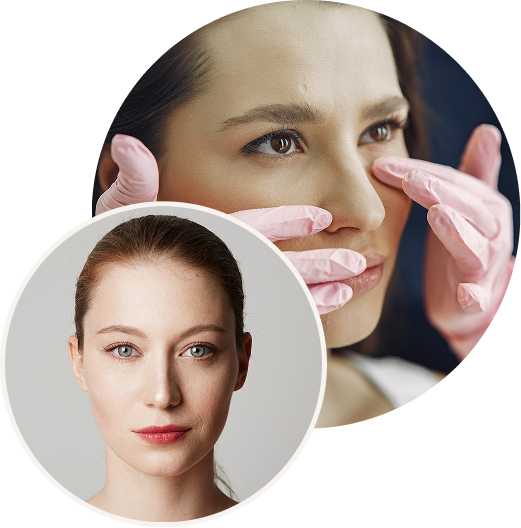Curious about brachioplasty? You’re not alone! This cosmetic procedure, often called an arm lift, has piqued the interest of many. Whether you’re considering it for yourself or just want to learn more, we’ve gathered the most common questions about brachioplasty to provide you with all the answers you need.

Table of Contents
Toggle1. What Exactly Is Brachioplasty?
Brachioplasty, commonly known as an arm lift, is a surgical procedure that reshapes the upper arm. It removes excess skin and fat to create a more toned look, ideal for those who have lost significant weight or experience sagging due to aging. This procedure is particularly beneficial for individuals who have undergone massive weight loss and are left with loose, hanging skin.
The process involves making incisions on the underside of the arm, which are strategically placed to minimize visible scarring. With advancements in surgical techniques, many surgeons are now able to offer minimal incision brachioplasty, which significantly reduces scarring while achieving effective results. It’s a procedure that not only improves physical appearance but also bolsters confidence, especially when wearing sleeveless clothing.
2. Who Is an Ideal Candidate for the Procedure?
The ideal candidate for brachioplasty is someone with loose upper arm skin or excess fat that does not respond to exercise. Generally, it’s perfect for individuals in good health with no underlying conditions that might interfere with healing. Potential candidates should also maintain a stable weight and ideally be non-smokers to reduce the risk of complications. It’s important to have realistic expectations and understand that while the procedure can significantly improve arm contour, some scarring is inevitable.
Additionally, individuals considering this procedure should be emotionally stable and have a positive outlook with clear goals in mind for the improvement of their body image. A good candidate is also typically someone who is committed to maintaining the results through a healthy lifestyle, as fluctuating weight can affect the longevity of the outcome.
3. What Does the Brachioplasty Process Involve?
The procedure typically involves an incision along the inner arm, allowing surgeons to remove excess skin and fat. The process can last several hours, depending on the extent of the surgery, and is usually performed under general anesthesia. During the procedure, the plastic surgeon will carefully trim away excess skin and may use liposuction to remove additional fat where necessary. This meticulous process not only reduces sagging but also creates a smoother, more youthful appearance.
4. What Should You Expect During Recovery?
Recovery from brachioplasty can take several weeks. Patients usually experience swelling and bruising initially but can return to light activities within a couple of weeks. Full recovery, however, may take up to several months to achieve the final results. In the initial phases, patients are advised to wear compression garments to reduce swelling and aid in the contouring of the arms.
Pain is typically managed with prescribed medications, and it’s important to follow your surgeon’s guidelines closely to ensure a smooth healing process. During this period, proper rest and avoiding strenuous activities are crucial. Keeping the arms elevated as much as possible can also help minimize swelling. Patients should regularly attend follow-up appointments with their surgeon to monitor healing and address any concerns.
5. Are There Any Risks Involved?
As with any surgery, brachioplasty carries certain risks such as scarring, infection, and changes in sensation. Consulting with a qualified surgeon and understanding these risks can help set realistic expectations. Candidates are usually screened thoroughly before undergoing the procedure to minimize any potential complications. The key to reducing risks lies in choosing an experienced and certified surgeon. Additionally, adherence to post-operative care is vital in minimizing risks like infection and poor wound healing.
6. How Do You Prepare for the Surgery?
Preparation involves discussions with your surgeon about your medical history, current medications, and desired outcomes. It’s crucial to be transparent during these consultations to ensure the safest possible outcome. You may also need to avoid certain medications, such as blood thinners, and stop smoking, as nicotine can impede healing. Pre-surgery instructions will often include maintaining a balanced diet and hydration to optimise your body for recovery.
7. What are the Costs Involved?
The cost of brachioplasty can vary widely based on location, surgeon’s experience, and the specific requirements of the surgery. It typically includes the surgeon’s fee, anesthesia, and facility fees. Some insurance coverage might be available in cases where it’s medically necessary, such as when excessive skin causes irritation or restrictive movement. It’s important to review all cost components during the initial consultations to avoid any surprises.
8. How Visible Are the Scars?
Scarring is a part of brachioplasty, with most incisions made on the inside or back of the arm. Over time, these scars typically fade and can be minimized by following post-operative care instructions provided by your surgeon. There are also many effective treatments such as silicone gels, scar massage, and laser therapy that can further reduce the appearance of scars. It’s essential to protect the scars from sun exposure by wearing sunscreen or clothing to prevent pigmentation.
Many patients find that the improvements in arm shape achieved through brachioplasty far outweigh the presence of scars. Additionally, surgeons are often able to tailor the placement of incisions to accommodate personal preferences regarding scar visibility, ensuring a balance between aesthetic outcome and scar minimization.
9. Can Brachioplasty Be Combined with Other Procedures?
Yes, brachioplasty is often combined with other cosmetic procedures such as liposuction to enhance the overall outcome. This combination allows for a more comprehensive body contouring result, addressing not only sagging skin but also stubborn fat deposits. It’s essential to discuss all your aesthetic goals with your surgeon to determine the best combination for you. By consolidating procedures, patients may benefit from reduced overall recovery time and a more synergized transformation.
10. Is Brachioplasty Permanent?
The results of brachioplasty are long-lasting, especially when maintained with a stable weight and regular exercise. However, natural aging processes can affect the longevity of the results. After achieving your ideal arm contour, incorporating healthy lifestyle choices is essential in preserving the results. This includes maintaining a nutritious diet, engaging in regular physical activity, and avoiding significant weight fluctuations.
